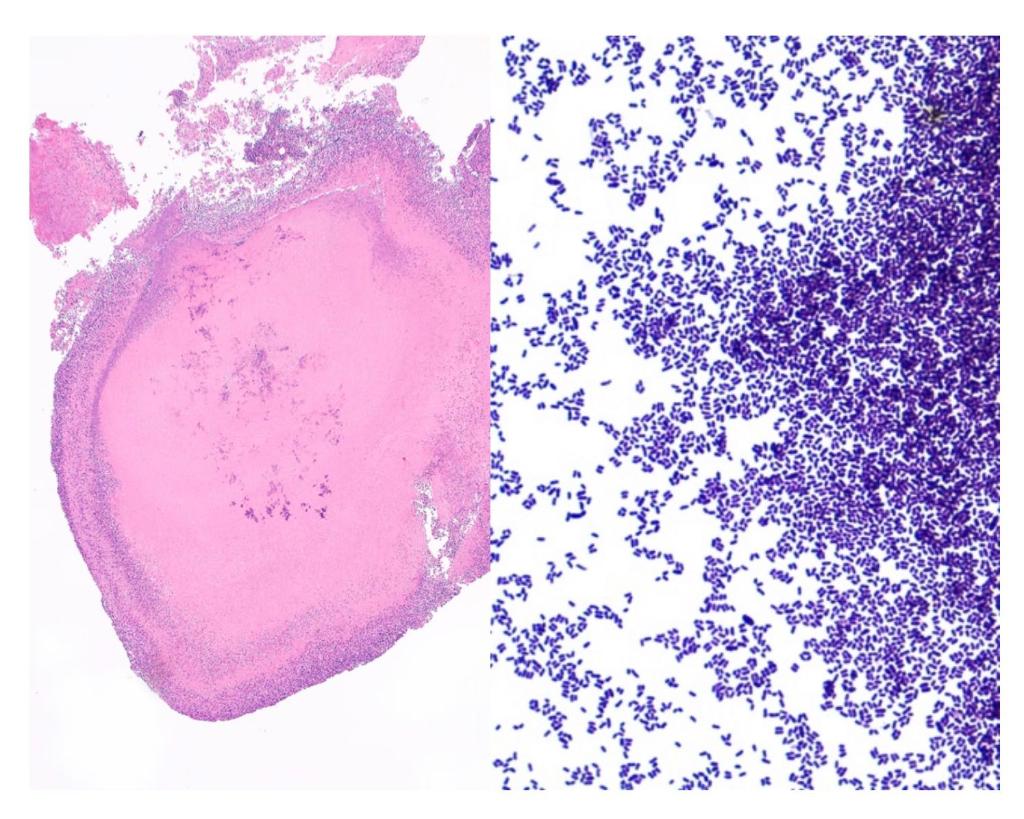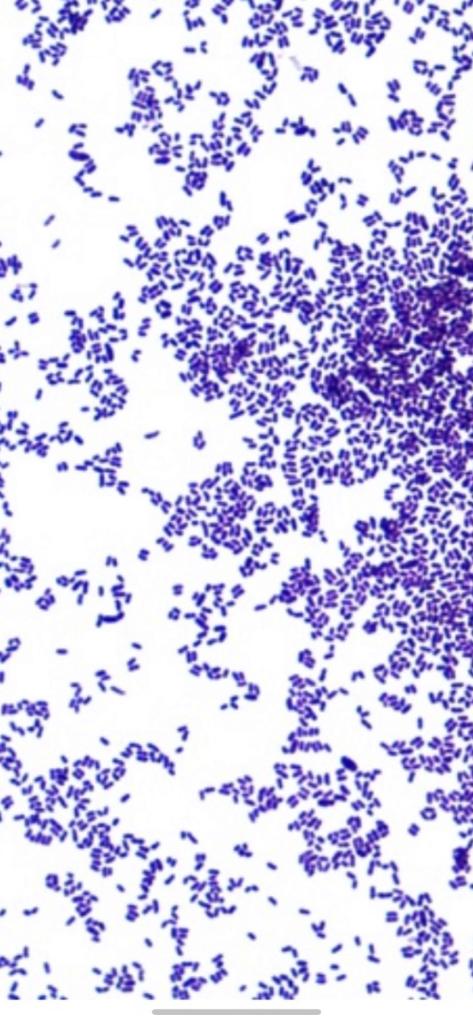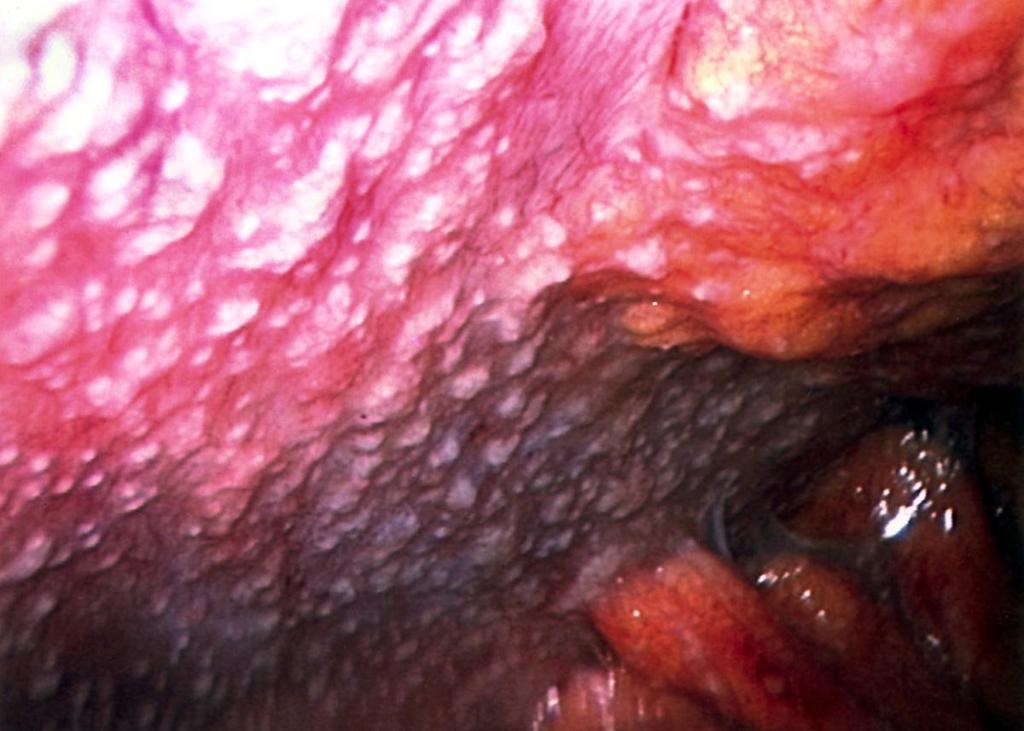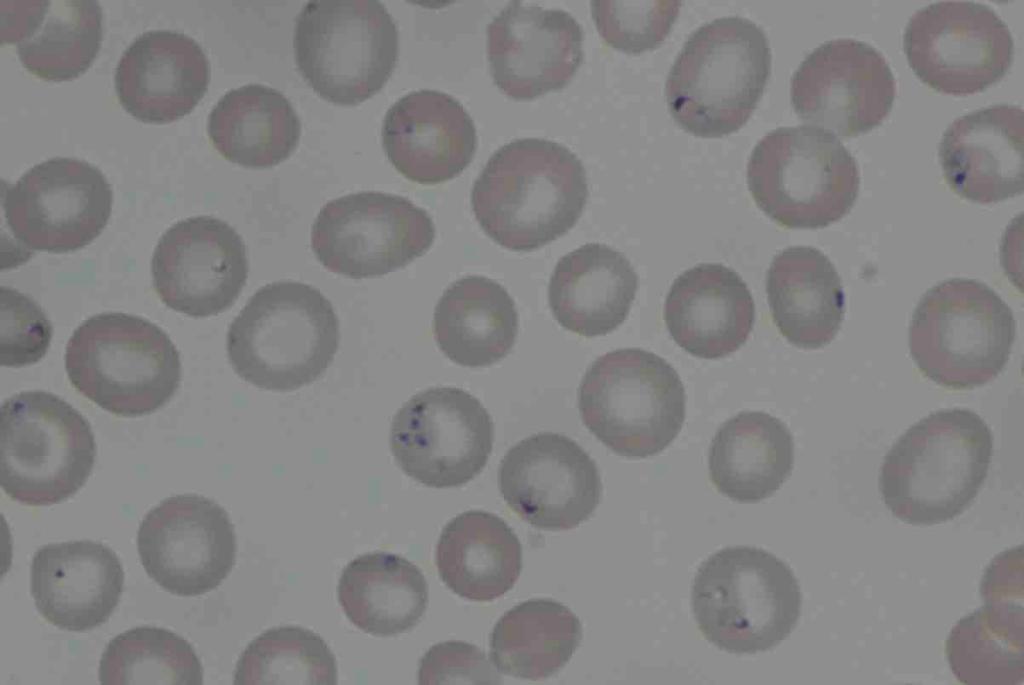This is the histopath and gram stain of culture of a lymph node biopsy of a person with tender purulent inguinal adenopathy.
Dr. @dwchallener
Dr. @ali_eberly
MCQ #MayoIDQ to follow

2 mo after L knee surgery —> tender L inguinal node with purulence. No F/C. No response to TMP-SMX.
Biopsy (see photo): Stellate suppurative granuloma with central necrosis and clumps of bacteria.
What is the most likely diagnosis?
#Gram stain: a first step in bacterial identification —> two major groups:
1. Gram-positive: retains primary stain (crystal violet)
2. Gram-negative: does not retain crystal violet but counterstained by safranin/fuchsine —> red / pink
Named after Hans Christian Gram (photo)

#Gram stain and morphology classifies bacteria into:
Gram (+) coccus / bacillus
Gram (-) coccus / bacillus
Gram stain of our case (photo) shows clumps of purple rods —> Gram (+) bacillus (photo)

As suggested by @Dr_Jeremy_Young , this mnemonic “ABCDE LT” is used to easily remember Gram + bacillus
Actinomyces group (incl. Nocardia)
Bacillus
Clostridium
Diphtheroids (corynebacterium)
Erysipelothrix
Listeria / Lactobacillus
T. whipplei
#Bartonella henselae was picked by 49% of responders
#CatScratchDisease is a top DDx in patient with febrile lymphadenitis + cat exposure!!!
However....
Bartonella henselae is NOT a gram+ bacillus (it is Gram-negative bacillus)
#Bartonella henselae #CatScratchDisease
1. Scratch/bite of cat; cat fleas
2. Hallmark: Lymphadenitis
3. Spread visceral organs: FUO in children (necrotizing granuloma in liver / spleen)
4. Dx: serology; culture (GNR); PCR; Warthin-Starry stain
5. Rx: azithromycin. TMP-SMX.
#Yersinia pestis causes #lymphadenitis
1. Zoonotic; fleas (rodent fleas, scratch of cats, animals, lab exposure)
2. #Bubonic plague
3. Others: pneumonic, septicemic
4. Dx: culture; GNR with “closed safety pin” bipolar staining
5. Rx: streptomycin; AG; alt: doxy / tetra / FQ
Case diagnosis: #Corynebacterium ulcerans
As per @ncabrera and @jabarcag , the Gram stain morphology is suggestive of corynebacterium (“snapping” division —> clusters and palisade arrangement that mimics “Chinese letters”)
#Clostridiodes difficile does not cause #buboes
#corynebacterium ulcerans
Zoonotic (dogs, cats, other animals) but rarely cause human illness
Closely related to C. diphtheria and C. pseudotuberculosis
May produce toxin and cause a diphtheria-like respiratory / cutaneous illness
academic.oup.com/cid/article/46…
One tweet on #diphtheriae
1. Toxin
2. Carrier, cutaneous, pharyngitis - cervical lymphadenopathy —> toxin absorption: myocarditis, systemic toxicity
3. Hallmark: pseudomembrane
4. Rx: antitoxin + antibiotics (PCN, erythromycin)
5. #VaccineWorks; outbreaks in unvaccinated
Back to the case:
It is possible that patient’s pets (dogs and cat) may harbor corynebacterium ulcerans —> contaminate the wound from recent knee surgery —> regional inguinal adenitis. Underlying Crohn’s Rx may have predisposed to severe disease.
Thanks for participating.





